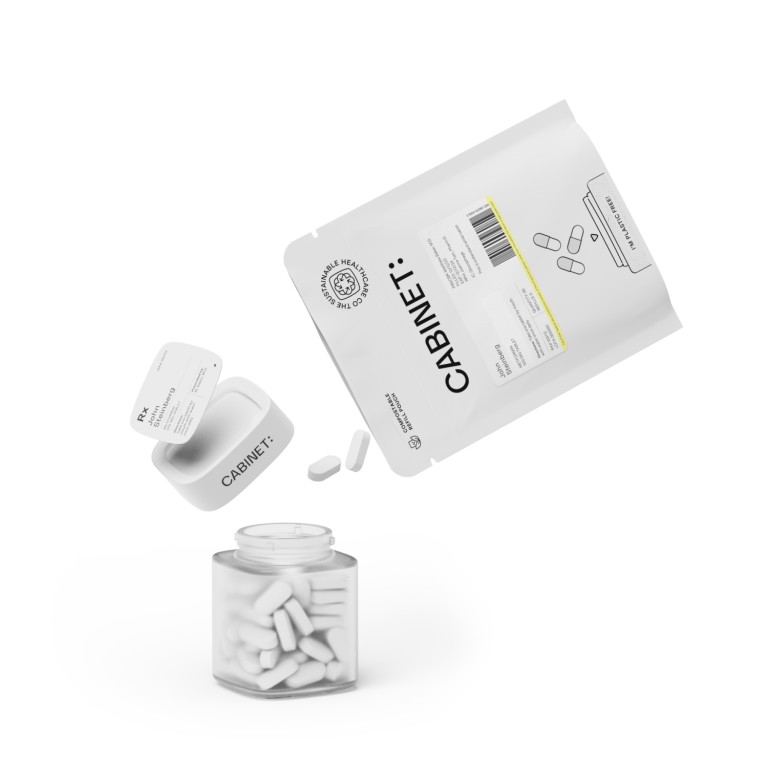Amoxicillin is a commonly prescribed antibiotic that is used to treat a wide range of bacterial infections. When it comes to determining the dosage of this medication, there are two options: a standard dosage and a strong dosage. In this article, we will explore the differences between these two dosages and discuss when each one is necessary.
Understanding Amoxicillin
Before we dive into the topic of dosage, let's first gain a better understanding of what amoxicillin is. Amoxicillin belongs to the penicillin group of antibiotics and works by stopping the growth of bacteria. It is effective against a variety of common bacterial infections, such as respiratory tract infections, urinary tract infections, and skin infections.
What is Amoxicillin?
Amoxicillin is a prescription medication that belongs to the class of antibiotics known as penicillins. It is commonly used to treat bacterial infections in various parts of the body. It works by interfering with the formation of the bacterial cell wall, thus preventing the growth and multiplication of bacteria.
How Does Amoxicillin Work?
Amoxicillin works by inhibiting the synthesis of bacterial cell walls. Bacteria need cell walls to survive and thrive. By interfering with the construction of these cell walls, amoxicillin effectively kills the bacteria or prevents them from multiplying, ultimately leading to the eradication of the infection.
It's important to note that while amoxicillin is effective against a wide range of bacterial infections, it is not effective against viral infections such as the common cold or flu. This is because viruses operate differently from bacteria and do not have cell walls that can be targeted by antibiotics like amoxicillin.
When taking amoxicillin, it is crucial to complete the full course of treatment prescribed by your healthcare provider, even if you start feeling better before the medication is finished. Stopping the medication prematurely can lead to the survival of bacteria that are more resistant to antibiotics, making future infections harder to treat.
The Importance of Correct Dosage
Ensuring that the correct dosage of amoxicillin is prescribed and taken is essential for successful treatment. Taking too much or too little of the medication can lead to suboptimal outcomes and may even contribute to the development of antibiotic resistance.
When it comes to antibiotics like amoxicillin, precision is key. The dosage prescribed by healthcare providers is carefully calculated based on factors such as the type of infection, the patient's weight, age, and overall health. Deviating from this prescribed dosage can disrupt the delicate balance needed to combat bacterial infections effectively.
Risks of Overdose
Taking more amoxicillin than the prescribed dosage can increase the risk of side effects without providing any additional benefit. Common side effects of amoxicillin overdose include nausea, vomiting, diarrhea, and stomach pain. In rare cases, overdose may lead to more severe reactions such as allergic reactions or liver damage.
It is crucial to follow the prescribed dosage instructions to avoid unnecessary discomfort and complications. Overdosing on antibiotics not only strains the body's organs but also poses a risk of disrupting the natural balance of beneficial bacteria in the gut, potentially leading to gastrointestinal issues.
Risks of Underdose
On the other hand, taking less amoxicillin than the prescribed amount can result in ineffective treatment. Underdosing may allow the bacteria to continue growing and cause the infection to persist or worsen. This can lead to complications and the need for a stronger antibiotic.
Underdosing can also contribute to the development of antibiotic resistance, a growing concern in healthcare. When bacteria are exposed to insufficient amounts of an antibiotic, they may not be completely eradicated, giving them a chance to adapt and become resistant to the medication. This can render future treatments less effective and limit options for combating infections.
Standard Dosage of Amoxicillin
The standard dosage of amoxicillin is determined based on various factors such as the type and severity of the infection, the patient's weight, and their overall health. It is important to note that the standard dosage is typically effective for most people.
Determining Factors for Standard Dosage
When determining the standard dosage, healthcare providers take into account the infection being treated and the patient's individual characteristics. For example, the dosage for a urinary tract infection may differ from the dosage for a respiratory infection. Additionally, children and adults may require different dosages due to variations in body size and metabolism.
Adjusting Dosage Over Time
In some cases, the standard dosage of amoxicillin may need to be adjusted over time. This can occur if the patient's condition does not improve or worsens despite taking the medication as prescribed. The healthcare provider may consider factors such as the patient's response to treatment, the presence of any drug interactions, and the development of antibiotic resistance when making dosage adjustments.
Strong Dosage of Amoxicillin
A strong dosage of amoxicillin may be necessary in certain situations where the standard dosage is not sufficient to effectively treat the infection. It is important to note that a strong dosage of amoxicillin should only be used when prescribed by a healthcare professional.
When is a Strong Dosage Necessary?
A strong dosage may be necessary if the infection is severe, resistant to standard treatment, or if the patient has a compromised immune system. Examples of situations where a strong dosage may be required include complicated urinary tract infections, deep-seated skin infections, and pneumonia.
Potential Side Effects of Strong Dosage
Just like any medication, a strong dosage of amoxicillin can come with potential side effects. These side effects may include gastrointestinal disturbances, allergic reactions, and rarely, serious adverse effects such as liver toxicity or blood disorders. It is crucial to discuss any concerns or symptoms with a healthcare professional in order to mitigate potential risks.
Amoxicillin and Specific Populations
Dosage for Children
When it comes to prescribing amoxicillin for children, healthcare providers carefully consider the child's age, weight, and the type of infection being treated. Children may require lower dosages compared to adults due to their smaller body size and developing metabolism. Ensuring proper dosage for children is crucial for their safety and effective treatment.
Dosage for Elderly
Elderly individuals may require adjustments to their amoxicillin dosage due to changes in their metabolism and overall health. Age-related decline and the presence of other medical conditions may affect how their body processes the medication. Consequently, healthcare providers take these factors into account when determining the appropriate dosage to ensure safety and optimum treatment outcomes in elderly patients.
In conclusion, amoxicillin is a widely used antibiotic that can effectively treat bacterial infections. The dosage of amoxicillin can vary depending on the severity of the infection, the patient's characteristics, and specific circumstances. It is crucial to take the medication as prescribed and consult with a healthcare professional to determine whether a standard or strong dosage is necessary. By understanding the importance of correct dosage and considering the needs of specific populations, we can achieve the best possible outcomes in the treatment of bacterial infections with amoxicillin.
If you're currently on amoxicillin or any other medication, it's time to experience the Cabinet® Health difference. Wondering if your prescription refill qualifies for a switch to Cabinet® Pharmacy? Simply Look Up Your Prescription and discover the benefits of transferring. Enjoy a complimentary personalized glass bottle that replaces the standard orange plastic, a chic medicine travel tin, and a free bottle of premium Acetaminophen. Our dedicated pharmacists will ensure a rapid transfer from your existing pharmacy, manage your refills, and more. Signing up is quick and easy—just search for your medications and provide your information, and our team will take care of the rest. With Cabinet®, your first order comes with special giveaways, hassle-free home shipping, and eco-friendly refill pouches that can be composted at home. Make the switch to a personalized, sustainable pharmacy experience with Cabinet® Health today.









